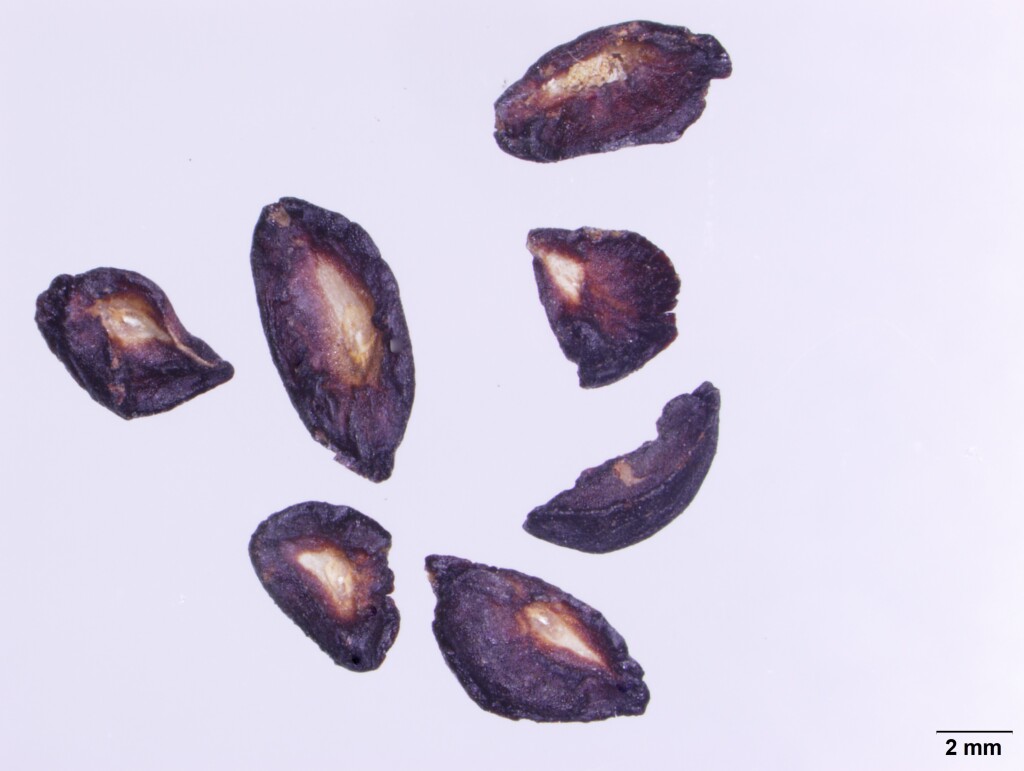Corymbia maculata
(Hook.) K.D.Hill & L.A.S.JohnsonTree to 60 m tall; bark smooth, shedding in small, irregular flakes giving a spotted appearance. Juvenile leaves petiolate, opposite for few pairs, then alternate, elliptic to ovate, some peltate, to 23 cm long, 10.5 cm wide, early leaves hairy; adult leaves petiolate, alternate, lanceolate, to 21 cm long, 3 cm wide, concolorous, green; with regular, wide-angled pinnate side veins; reticulation very dense, with small island oil glands. Inflorescences compound in axils of upper leaves; peduncles to 2 cm long, 3(–7)-flowered; buds pedicellate, ovoid, to 1 cm long, 0.6 cm diam., scar absent; operculum conical or beaked; stamens inflexed; anthers cuneate; ovules in 4 or 5 vertical rows; flowers white or creamy-white. Fruit pedicellate, ovoid to slightly urceolate, 1.4 cm long, 1.1 cm diam.; disc vertically descending, lining tube; valves deeply enclosed; seed red-brown, flattened-elliptic, often keeled on dorsal side, hilum ventral. Flowers Jul.–Sep.
Wim, VVP, VRiv, GipP, OtP, Gold, CVU, DunT, NIS, EGL, EGU, HSF, HNF, OtR, Strz. Only known in Victoria from the Mottle Range, south of Buchan.
Notable for its erect form and completely smooth bark; closely allied to only two other species, Corymbia citriodora (Hook.) K.D.Hill & L.A.S.Johnson, which is endemic to central and northern Queensland and is distinguished by its narrower leaves which are lemon-scented on crushing, and C. henryi (S.T.Blake) K.D.Hill & L.A.S.Johson, which occurs in northern New South Wales and south-east Queensland and has larger leaves, buds and fruits. Both C. maculata and C. citriodora are widely planted for ornament.
Brooker, M.I.H.; Slee, A.V. (1996). Eucalyptus. In: Walsh, N.G.; Entwisle, T.J., Flora of Victoria Vol. 3, Dicotyledons Winteraceae to Myrtaceae, pp. 946–1009. Inkata Press, Melbourne.
 Spinning
Spinning



